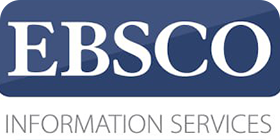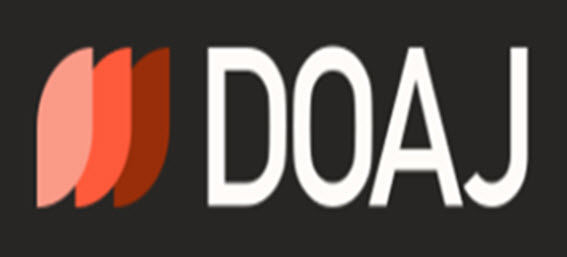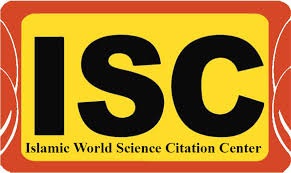Identification of Indicators, Components, and Dimensions for the Development of Blended Learning Management in Technical and Vocational Schools of Tehran Province
Keywords:
Blended learning management, Educational Technology, Vocational Education, Instructional Design, assessment methods, technical education, qualitative researchAbstract
Purpose: This study aimed to identify the indicators, components, and dimensions of blended learning management development in technical and vocational schools in Tehran Province. Methods and Materials: This qualitative study employed a thematic analysis approach using semi-structured interviews with 20 experts, including vocational school teachers and academic professionals specializing in educational management. The statistical population consisted of scientific documents, books, research articles, and dissertations from domestic and international databases between 2017 and 2023. The purposive sampling method was applied, and data collection involved semi-structured interviews and a researcher-developed questionnaire. Data were analyzed using MAXQDA software, following open, axial, and selective coding techniques. To ensure trustworthiness, the study applied criteria for credibility, transferability, dependability, and confirmability. Findings: The findings identified five key dimensions, 18 components, and 70 indicators for blended learning management development. The content design and development dimension included defining learning goals, selecting and evaluating educational resources, designing learning activities, and structuring content. The technology and educational tools dimension encompassed selecting appropriate technologies, integrating technology into content, and training in technology use. The assessment and feedback methods dimension included evaluating learner and instructor performance, assessing educational tools, and structured feedback. The management and organization dimension covered data analysis, prioritization, and improvement program implementation. The support and guidance dimension included supplementary training, security and privacy, technical support, and guidance resources. The study emphasized that blended learning management should align with students’ needs, industry demands, and active learning strategies. Conclusion: Blended learning management development requires a systematic approach integrating educational technologies, diverse assessment methods, structured content design, and continuous improvement strategies. The study recommends using multimedia educational materials, active learning methodologies, web-based learning management systems, video conferencing tools, and diverse assessment techniques to enhance learning effectiveness. Limitations included the use of semi-structured interviews and the study’s geographic focus on Tehran Province, excluding other regions.
Downloads
References
Abbasi Kasani, H., Mehri, D., Mahjoub, H., & Raoufi, A. (2021). Factors Influencing the Implementation of Blended Learning in Higher Education. Education in Law Enforcement Sciences, 9(32), 127-157. https://doi.org/10.5812/erms.101587
Adhi, S., Achmad, D., & Herminarto, S. (2022). Developing a blended learning model in Islamic religious education to improve learning outcomes. International Journal of Information and Education Technology, 12(2), 100-107. https://doi.org/10.18178/ijiet.2022.12.2.1592
Agusta, A. R., & Pratiwi, D. A. (2021). Developing blended learning model Martapura to improve soft and social skills. 4th Sriwijaya University Learning and Education International Conference (SULE-IC 2020), 294-302. https://doi.org/10.2991/assehr.k.201230.121
Ayob, H. H., Daleure, G., Solovieva, N., Minhas, W., & White, T. (2023). The effectiveness of using blended learning teaching and learning strategy to develop students' performance at higher education. Journal of Applied Research in Higher Education, 15(3), 650-662. https://doi.org/10.1108/JARHE-09-2020-0288
Bhadri, G. N., & Patil, L. R. (2022). Blended learning: An effective approach for online teaching and learning. Journal of Engineering Education Transformations, 35(1), 2394-1707. https://doi.org/10.16920/jeet/2022/v35is1/22008
Boelens, R., De Wever, B., & Voet, M. (2017). Four key challenges to the design of blended learning: A systematic literature review. Educational Research Review, 22, 1-18. https://doi.org/10.1016/j.edurev.2017.06.001
Bykova, T. B., Ivashchenko, M. V., Kassim, D. A., & Kovalchuk, V. I. (2021). Blended learning in the context of digitalization.
Diana, E., Rahmah, N., & Rofiki, M. (2022). Blended Learning Management: The Efforts to Develop Students’ Soft Skills in the New Normal Era. Jurnal Basicedu, 6(3), 4272-4281. https://doi.org/10.31004/basicedu.v6i3.2835
Faraji, R. M., & Shabani, R. (2023). Requirements and Strategies for Developing Blended Learning in Physical Education Courses in Schools. Research in Educational Sports. https://res.ssrc.ac.ir/article_3980.html
Ghafrani, N. T., Shah Hosseini, A. K., & Pourkarimi. (2023). Designing a Model for a Blended Teaching-Learning System in Universities: Explanation of Dimensions and Components. Educational Technology, 17(4), 881-902. https://www.sid.ir/paper/1159427/fa
Islam, M. K., Sarker, M. F. H., & Islam, M. S. (2022). Promoting student-centred blended learning in higher education: A model. E-Learning and Digital Media, 19(1), 36-54. https://doi.org/10.1177/20427530211027721
Karami, M. (2024). Examining the Impact of Blended Learning on Students' Motivation and Academic Achievement. Movement and Behavioral Sciences. https://www.jmbs.ir/article_194974.html
Kebria, A., & Abedi, M. (2022). Effectiveness of Blended Learning and Traditional Methods on Mathematics Progress and Improving the Attitudes of Elementary Teachers. Movement and Behavioral Sciences, 5(4), 317-323. https://www.jmbs.ir/article_170481_e0883203935413ab6f1a0df1b8eb1f83.pdf
Khoshkam, M., Karamati, H., Mo'azami, D. Z., & Esfandiar. (2023). Designing an Interpretive Structural Model for Strategies to Develop Collaborative Learning Management in Virtual Education in Physical Education High Schools. Sports Media Communication Management. https://sportmedia.journals.pnu.ac.ir/article_10101.html?lang=en
Makarem, P., Karimian, S., & Sanayei, Z. (2023). Examining the Perceptions of Dentistry Students Towards E-Learning and the Effectiveness of Interactive Blended Learning Tools: A One-Group Study on the Clinical Biochemistry Course. Jundishapur Journal of Educational Development, 14(3), 311-326. https://www.sid.ir/paper/1357893/en
Mardani, F., Vázquez, N. P., Rajendrakumar, J., & Saadati, S. M. (2024). The Experience of Learning a Second Language as an Adult: A Qualitative Exploration of Motivation and Challenges. International Journal of Education and Cognitive Sciences, 5(2), 16-22. https://doi.org/10.61838/kman.ijeas.5.2.3
Nourizadeh, Z.-A. H.-R., Nooh, E., & Abdollahi. (2022). Designing an Optimal Model for Blended Learning at Payame Noor University. Scientific Journal of Education and Evaluation (Quarterly), 15(58), 33-66. https://sanad.iau.ir/en/Journal/jinev/Article/972219
Ofem, U. J. (2023). Adjustment Tendencies Among Transiting Students: A Mediation Analysis Using Psychological Wellbeing Indices. International Journal of Education and Cognitive Sciences, 4(3), 1-19. https://doi.org/10.61838/kman.ijecs.4.3.1
Downloads
Published
Submitted
Revised
Accepted
Issue
Section
License
Copyright (c) 2025 Mohammad Mehdi Ahangari, Amineh Ahmadi, Ghodsi Ahghar, Zahra Taleb (Author)

This work is licensed under a Creative Commons Attribution-NonCommercial 4.0 International License.










